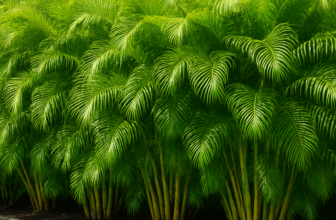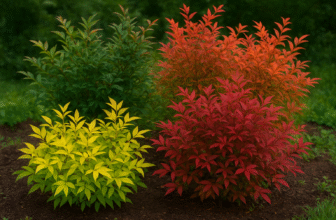Nature’s Rare Jewel
Few can match the splendour of the White Protea in terms of floral beauty. Often referred to as the “White King,” this rare and magnificent flower captivates the hearts of gardeners, florists, and plant enthusiasts alike. Gardengreen.au will help you explore the allure of the White Protea and its unique characteristics.
Artificial White Protea flowers offer a versatile and durable option for various decorative purposes. Here are several creative ways you can use them:
Home Décor
- Centrepieces: Artificial Protea, either alone or combined with other faux flowers and greenery, create stunning table centrepieces.
- Wall Art: Arrange artificial White Proteas in shadow boxes or on a decorative wreath to hang on walls.
- Vases: Place them in elegant vases to add a touch of sophistication to any room.
- Arrangements: Mix them with other artificial flowers and plants in arrangements for mantels, side tables, or shelves.
- Garlands: Use artificial White Proteas in garlands for a festive and unique decoration for doorways, staircases, or fireplaces.
- |Terrariums: Incorporate them into decorative terrariums or glass containers for a modern look.

Bridal Bouquets and Wedding Decor
- Bridal Bouquets: Use artificial White Proteas as the focal point of a bridal bouquet, complemented by other artificial flowers and greenery.
- Boutonnieres: Create elegant boutonnieres for the groom and groomsmen.
- Corsages: Design beautiful corsages for the mothers of the bride and groom.
- Wedding Arches: Decorate wedding arches or ceremonial backdrops with artificial White Proteas.
- Table Decorations: Use them in table centrepieces and floral arrangements for the reception.
- Aisle Markers: Place artificial White Proteas along the aisle for a romantic touch.

Seasonal and Special Occasion Décor
- Holiday Decorations: Incorporate them into holiday wreaths, garlands, or centrepieces for Christmas, Thanksgiving, or other celebrations.
- Event Decor: Use them in decorations for birthdays, anniversaries, or corporate gatherings.
- Gift Wrapping: Add artificial White Proteas to gift packages for an elegant and unique presentation.
- Themed Parties: Integrate them into decorations for themed parties, such as garden parties or boho-chic events.
DIY Projects
- Floral Crowns: Make beautiful floral crowns for special occasions or festivals.
- Wreaths: Craft seasonal or everyday wreaths featuring artificial White Proteas.
- Craft Projects: You can use them in various craft projects, such as decorating picture frames, creating floral sculptures, or embellishing homemade cards.
Permanent Installations
- Office Décor: Enhance the look of office spaces, waiting rooms, or lobbies with artificial White Proteas.
- Restaurants and Cafés: Use them in floral arrangements to decorate tables, counters, or window displays.
- Retail Displays: Incorporate them into retail displays to attract customers and create an inviting atmosphere.
The Protea family, belonging to the Proteaceae family, encompasses various species, each with unique beauty and characteristics. Here’s an overview of the diversity within the Protea genus:
Diversity of Protea Species
1. Protea cynaroides (King Protea)
- Description: Known as the King Protea, this species is renowned for its large, striking flower heads reaching 12 inches in diameter.
- Varieties: Includes the common pink variety and the rare Protea.

2. Protea repens (Sugarbush)
- Description: This species produces smaller flowers than King Protea, with a sweet nectar attracting birds and insects.
- Varieties: Colors range from red and pink to creamy white.
3. Protea neriifolia (Oleander-leaf Protea)
- Description: Characterized by its long, slender leaves and colourful flower bracts, this species is widespread in the cut flower industry.
- Varieties: Bracts can be pink, red, or cream, often with black tips.
4. Protea magnifica (Queen Protea)
- Description: The Queen Protea boasts large, bowl-shaped flowers with a velvety texture and striking colours.
- Varieties: Typically found in shades of pink and mauve.
5. Protea compacta (Bot River Protea)
- Description: A bushy shrub that produces dense clusters of flowers, making it a favourite for hedging and landscaping.
- Varieties: Flowers are generally pink or red.
6. Protea eximia (Broad-leafed Sugarbush)
- Description: Known for its broad leaves and large, showy flowers, this species is a robust addition to any garden.
- Varieties: Flowers range from deep pink to crimson.
7. Protea obtusifolia (Limestone Sugarbush)
- Description: Adapted to coastal regions, this species thrives in limestone soils and produces abundant, colourful blooms.
- Varieties: Flower colours include pink, red, and cream.
8. Protea grandnieces (Red Sugarbush)
- Description: Its striking red flowers and dense foliage make this species visually stunning and attract pollinators.
- Varieties: Mainly red flowers with occasional variations.

Growing Conditions and Adaptations
Proteas are native to the fynbos region of South Africa, which features Mediterranean-like climates with wet winters and dry summers. Their diversity is a testament to their adaptability to different soil types, altitudes, and climatic conditions. Key adaptations include:
- Drought Tolerance: Most Proteas are well-adapted to survive long dry periods.
- Fire Resistance: Some species have adapted to survive and regenerate after wildfires.
- Poor Soil Adaptation: Many Proteas thrive in nutrient-poor, acidic soils.

Incorporating Proteas into Your Garden
Given the diversity within the Protea genus, there’s a variety to suit almost any garden setting:
- Hedging: Species like Protea compacta are ideal for creating attractive hedges.
- Focal Points: Larger varieties like Protea cynaroides make stunning focal points.
- Cut Flowers: Many Proteas are excellent for floral arrangements due to their long-lasting blooms.
The Allure of White Protea
The White Protea (Protea cynaroides ‘White’) is a strikingly beautiful flower known for its large, creamy-white blooms and regal appearance. Its distinctive look sets it apart from other members of the Protea family, making it a coveted addition to any garden or bouquet. The White Protea’s immaculate petals radiate elegance and purity, symbolizing sophistication and grace.
Rare and Precious
The rarity of the White Protea adds to its charm. Unlike its more common pink or red counterparts, the white variety is less frequently encountered in the wild. This scarcity makes each sighting or acquisition of a White Protea feel like discovering a hidden treasure. For gardeners, growing a White Protea is nurturing a plant and cultivating a rare gem that stands out in any botanical collection.

Characteristics and Care
The White Protea shares many traits with other Protea species, including its rugged, leathery leaves and long-lasting blooms. However, its white flowers set it apart, providing a unique visual appeal. Here are some key characteristics and care tips for the White Protea:
- Climate: White Proteas thrive in well-drained soil and sunny locations. They are native to South Africa’s fynbos region, which means they prefer Mediterranean climates with wet winters and dry summers.
- Watering: While Proteas are drought-tolerant, young plants need regular watering to establish their roots. Once established, they require less frequent watering, making them relatively low-maintenance.
- Soil: Well-drained, slightly acidic soil is ideal for White Proteas. Avoid heavy, clayey soils that retain moisture, as this can lead to root rot.
- Pruning: Regular pruning helps maintain the plant’s shape and encourages new growth. Remove spent flowers to promote further blooming and prevent the plant from becoming leggy.
- Propagation: Proteas can be propagated from seeds or cuttings. However, growing from seed can be lengthy, so cuttings are often preferred for quicker results.

Incorporating White Protea into Your Garden
Whether you’re an avid gardener or a casual plant lover, incorporating White Proteas into your garden can elevate its aesthetic appeal. Here are some ideas on how to make the most of this stunning flower:
- Focal Point: Use White Proteas as a focal point in your garden design. Their large, striking blooms draw attention and create a visual anchor.
- Companion Planting: Pair White Proteas with other Mediterranean plants like lavender, rosemary, and sage. Their complementary colours and textures enhance the overall look of your garden.
- Container Gardening: Consider growing white proteas in containers if space is limited. This allows you to move them around and showcase their beauty in various parts of your outdoor space.
- Cut Flowers: White proteas’ long-lasting blooms make them excellent cut flowers. Use them in bouquets, centrepieces, or floral arrangements to add a touch of elegance to any occasion.
Conclusion
The White Protea is more than just a flower; it symbolises rarity, beauty, and sophistication. Its enchanting blooms and unique characteristics make it a standout addition to any garden or floral display. Whether cultivating a White Protea in your garden or using it to create stunning arrangements, this botanical marvel will surely captivate and inspire. Embrace the beauty of the White Protea and let it bring a touch of elegance and wonder to your botanical endeavours.





